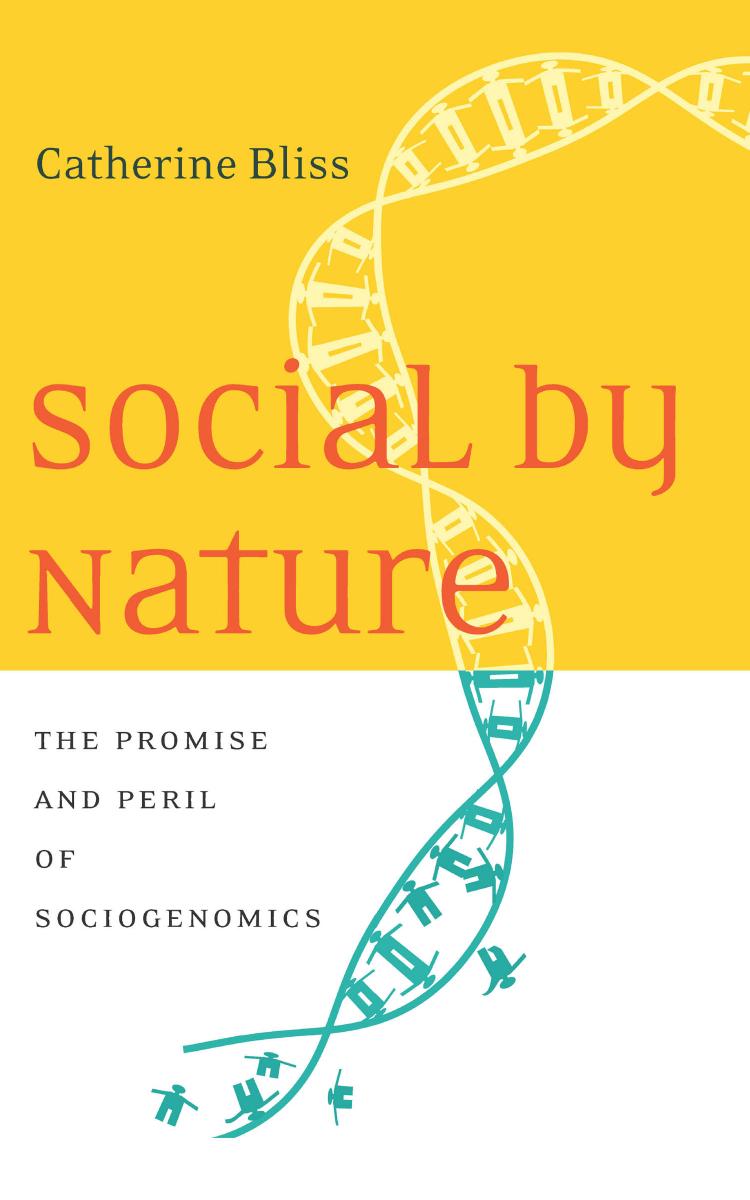Social by Nature: The Promise and Peril of Sociogenomics by Catherine Bliss

Author:Catherine Bliss [Bliss, Catherine]
Language: eng
Format: epub, pdf
ISBN: 9781503603967
Publisher: Stanford University Press
Published: 2017-01-15T07:00:00+00:00
CHAPTER 7
APPLIED SCIENCE
The team had been working with these miniscule variations in DNA for some time now. They had found success with a variety of mutations and were hot on the trail of a kind of sequence variation that could identify humans as unique individuals. Then one day they saw it: tiny tandem repeats in what everyone thought of as useless DNA surrounding our genes. They had a unique marker that could identify each and every one of us.
As Sir Alec Jeffries describes it:
My life changed on Monday morning at 9:05 a.m., 10 September 1984. What emerged was the world’s first genetic fingerprint. In science it is unusual to have such a “eureka” moment. We were getting extraordinarily variable patterns of DNA, including from our technician and her mother and father, as well as from nonhuman samples. My first reaction to the results was “this is too complicated,” and then the penny dropped and I realised we had genetic fingerprinting.1
Immediately, Jeffries and his team began discussing applications. Paternity? Animal conservation? Forensics? To this list, his wife added immigration. Jeffries recalls: “That was when I realised this had a political dimension and that it could change the face of immigration disputes, especially where no documentary evidence existed.”
The team’s first case involved reuniting a young boy with his family. As Jeffries remembers, “It captured the public’s sympathy and imagination. It was science helping an individual challenge authority. . . . The court allowed me to let the family know we had proved their case, and I shall never forget the look in the mother’s eyes.”2 A year later and many familial applications on, the first criminal application was made. The case was a double rape and homicide of two young girls. After a DNA dragnet in which the males in the community where the crime had occurred had provided DNA samples, the criminal was found. Jeffries again heartened at the socially just applications his technology could provide.
Jeffries devised a special technology to assist in forensic cases, but his passion was with immigration and family reunification. He wanted to give recourse to families navigating a system set against them. Thirty-odd years later, the DNA fingerprint is known as a tool of surveillance. It is ubiquitously used in criminal investigations, including systematizing criminals into large national and supranational databases. And in 2015, a police program was established to triangulate computerized data from perps, including their criminal history, social media activity, and patterns in drug use, to predict who might commit future crimes.3
I share this story because it illustrates the point that there can be important unintended consequences for the science we create. Jeffries and his team rejoiced in inventing a technology that could help families win against a bully system. His hopes for the forensic uses of the technology were equally “with the people,” helping community members and those invisible to the powers that be. But his technology has itself “mutated” and is now used in many ways that he couldn’t have foreseen—and in some that he would likely not support.
Download
Social by Nature: The Promise and Peril of Sociogenomics by Catherine Bliss.pdf
This site does not store any files on its server. We only index and link to content provided by other sites. Please contact the content providers to delete copyright contents if any and email us, we'll remove relevant links or contents immediately.
Nudge - Improving Decisions about Health, Wealth, and Happiness by Thaler Sunstein(7654)
iGen by Jean M. Twenge(5384)
The Fire Next Time by James Baldwin(5379)
Adulting by Kelly Williams Brown(4529)
The Sports Rules Book by Human Kinetics(4339)
The Hacking of the American Mind by Robert H. Lustig(4336)
The Ethical Slut by Janet W. Hardy(4211)
Captivate by Vanessa Van Edwards(3814)
Mummy Knew by Lisa James(3653)
In a Sunburned Country by Bill Bryson(3506)
The Worm at the Core by Sheldon Solomon(3450)
Ants Among Elephants by Sujatha Gidla(3439)
The 48 laws of power by Robert Greene & Joost Elffers(3137)
Suicide: A Study in Sociology by Emile Durkheim(2989)
The Slow Fix: Solve Problems, Work Smarter, and Live Better In a World Addicted to Speed by Carl Honore(2975)
The Tipping Point by Malcolm Gladwell(2864)
Humans of New York by Brandon Stanton(2847)
Handbook of Forensic Sociology and Psychology by Stephen J. Morewitz & Mark L. Goldstein(2676)
The Happy Hooker by Xaviera Hollander(2671)
